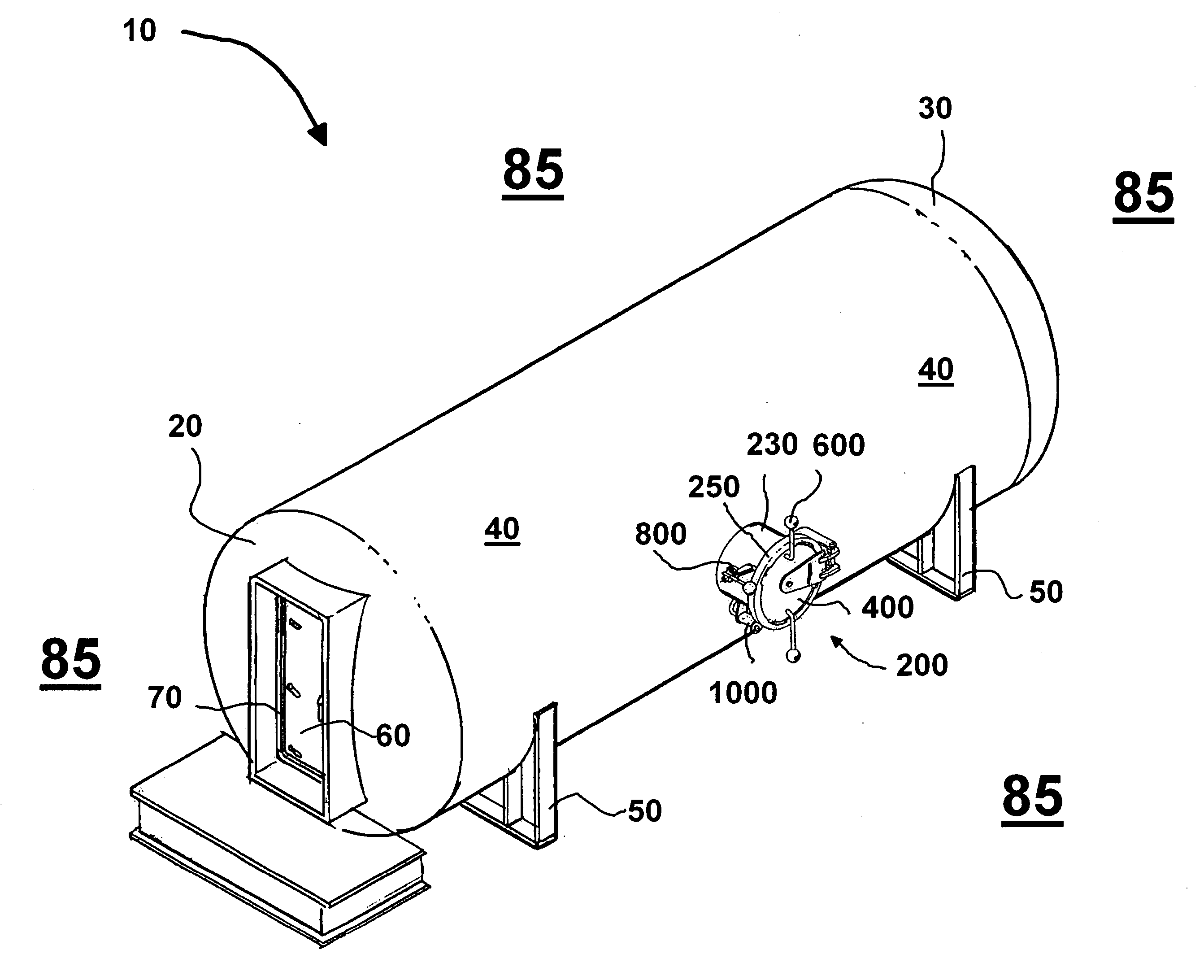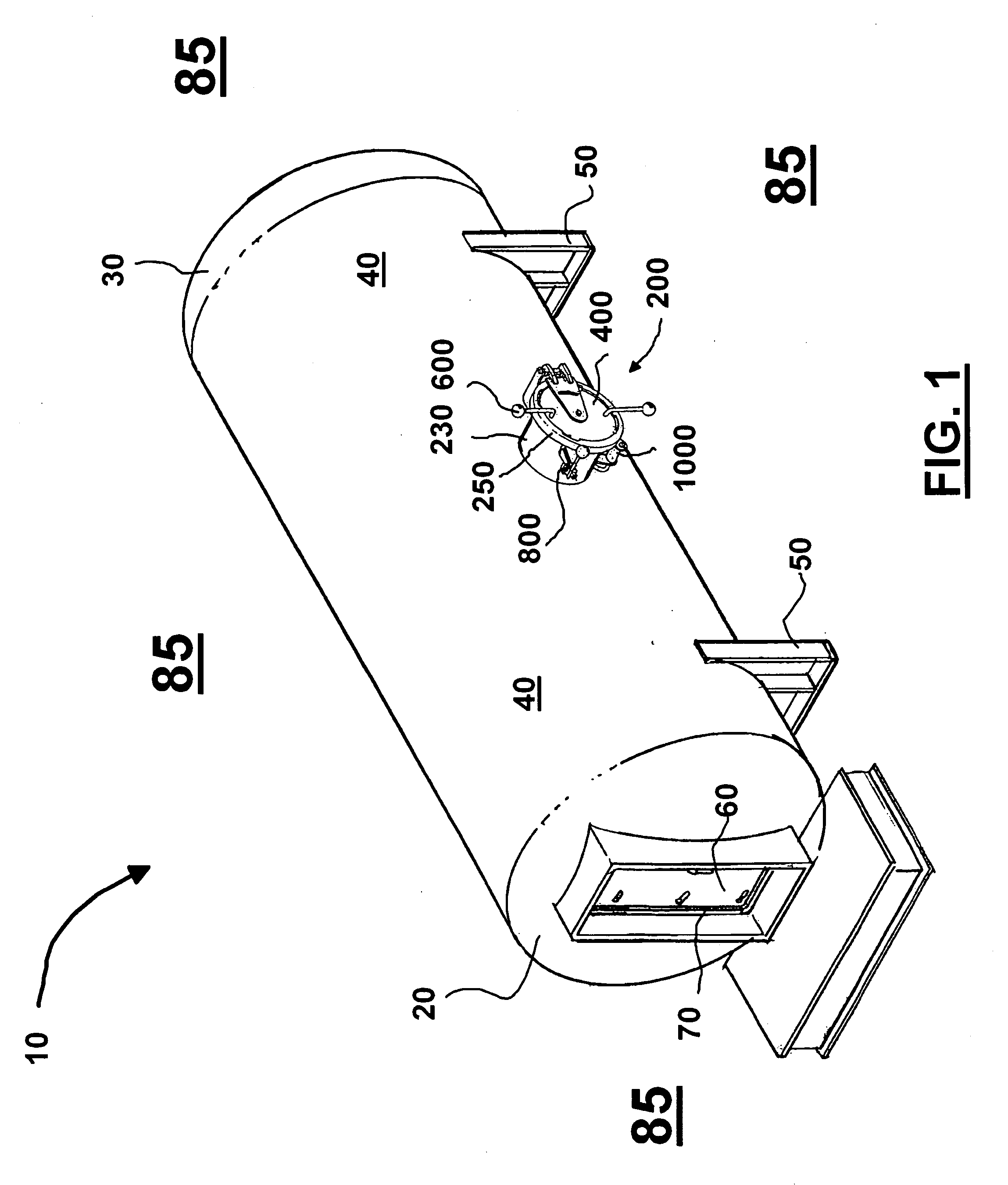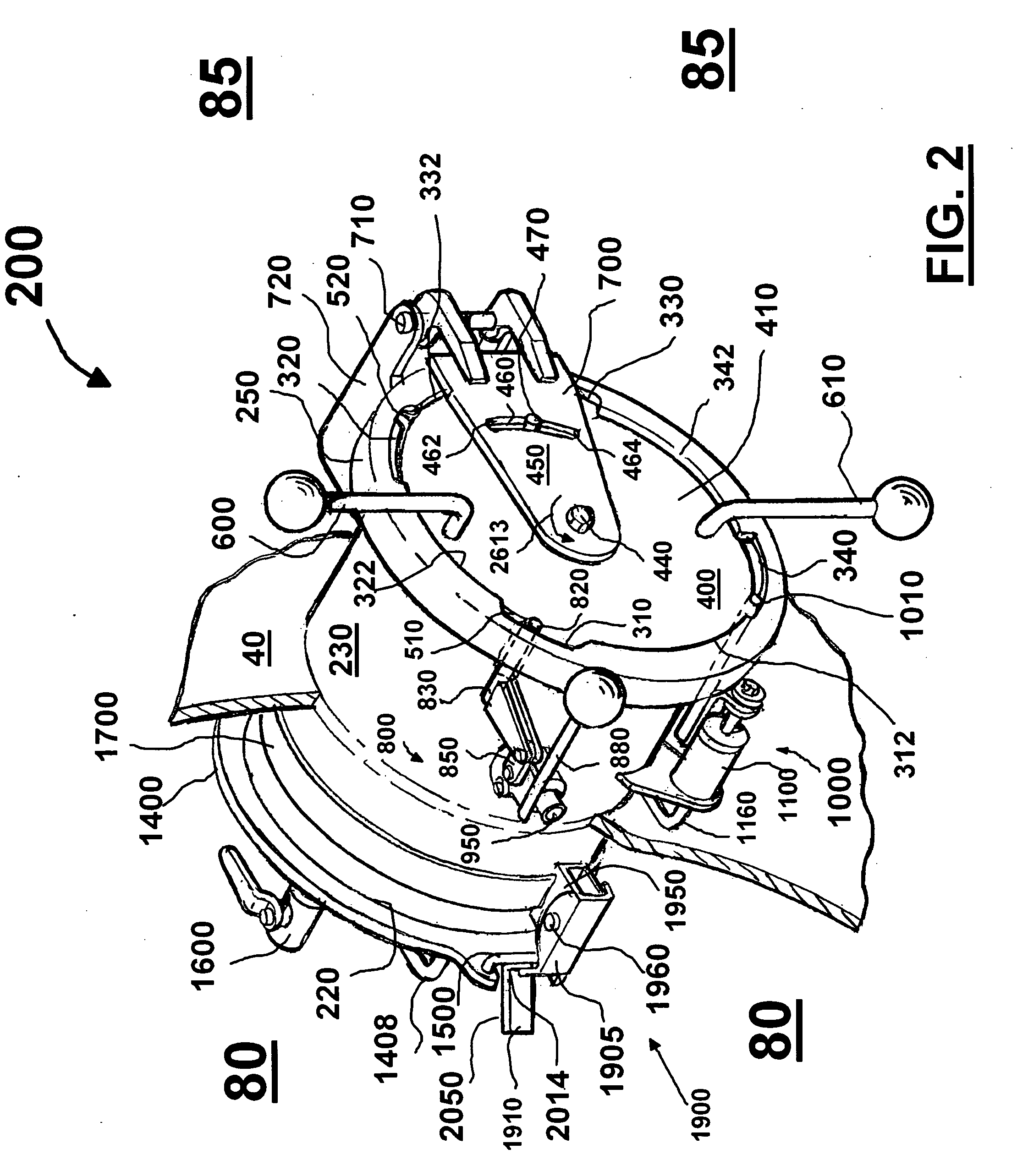Interlock vessel for hyperbaric transfer system
a technology of interlocking vessel and transfer system, which is applied in the field of interlocking vessel for hyperbaric transfer system, can solve the problems of operator's attempt to open the air lock, serious risk of trauma to divers, permanent disabling injuries, etc., and achieve the effect of preventing undesirable rotation and facilitating air tight engagement of the door
- Summary
- Abstract
- Description
- Claims
- Application Information
AI Technical Summary
Benefits of technology
Problems solved by technology
Method used
Image
Examples
Embodiment Construction
[0088]Turning now to the drawings in more detail an airlock assembly or portal is generally designated by numeral 200. In the following description, the terms “portal,”“airlock assembly,” interlock vessel,” and interlock assembly are used interchangeably. The portal 200 is designed to be used in a hyperbaric chamber (e.g., decompression chamber) 10 transfer system.
[0089]FIG. 1 is a perspective view of a decompression chamber 10 with air lock or portal 200. In one embodiment a decompression chamber 10 having a fluidly connected portal 200 is included. Decompression chamber 10 can include first end 20, second end 30, and side wall 40. Base 50 can be included to support chamber 10. For entering chamber 10 a door 60 can be provided. Door 60 can be sealed with conventionally available seal 70. Chamber 10 can have interior 80, and sidewall 40 can separate interior 80 from the exterior 85 (or ambient environment). Preferably, door 60 opens to the interior 80 of chamber 10.
[0090]As will be ...
PUM
 Login to View More
Login to View More Abstract
Description
Claims
Application Information
 Login to View More
Login to View More - R&D
- Intellectual Property
- Life Sciences
- Materials
- Tech Scout
- Unparalleled Data Quality
- Higher Quality Content
- 60% Fewer Hallucinations
Browse by: Latest US Patents, China's latest patents, Technical Efficacy Thesaurus, Application Domain, Technology Topic, Popular Technical Reports.
© 2025 PatSnap. All rights reserved.Legal|Privacy policy|Modern Slavery Act Transparency Statement|Sitemap|About US| Contact US: help@patsnap.com



